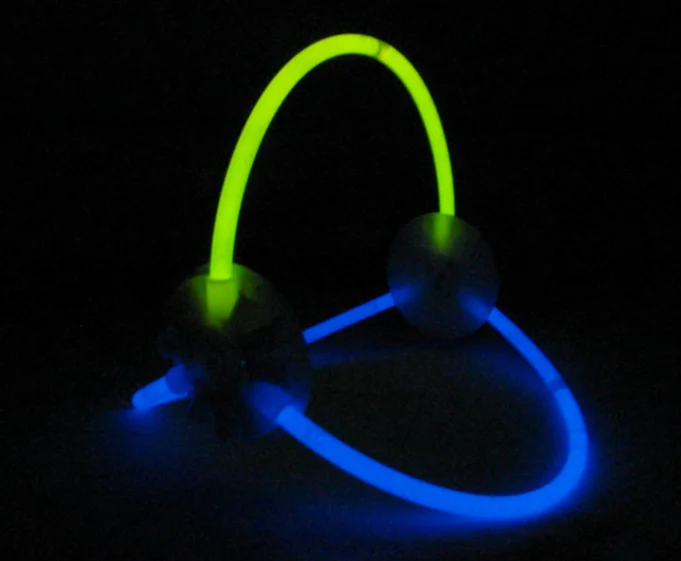For the most part, Civil War soldiers usually looked more like this:
…than this:
…but some soldiers actually did glow in the dark, or at least parts of them did, for a few days during the Civil War.
In 1862, some of the soldiers who were hurt during the Battle of Shiloh ended up having wounds that started glowing blue like Smurf nightlights. The battlefield doctors noticed these glowing soldiers were also more likely to get healthy than soldiers whose wounds did not glow. They called this weird phenomenon “Angel’s Glow.”
It seemed reasonable that angels would come down and make a handful of soldiers’ wounds glow for just two days out of the Civil War because, at that time, the process of science (where people try to understand why and how things happen in the world by observing nature carefully, testing ideas, collecting tons of data and looking for patterns to find answers) was fairly new. In the 1800s, scientists were just starting to learn about the world. During that century, people still didn’t know a lot of things about our bodies, our planet and our universe that now most 7-year-olds would be able to tell you in two seconds.
Just to give you an example, a few years before the Civil War, a newspaper in New York City was able to convince a lot of people that the Moon was covered with creatures that looked like this:
People knew so little about the Moon at that time that it totally made sense to them that the moon would be inhabited by unicorns and bat-people. The newspaper printing these stories and illustrations was well aware the stories were not true, but the newspaper printed them anyways because the stories helped sell a lot of newspapers ($$). The public kept buying and reading the newspapers, hoping to learn more about the interesting lifestyles of bat-winged moon people, until they found out it was all a hoax.
Since science was just getting going in the Nineteenth Century, after the Civil War, figuring out why soldiers in Tennessee glowed in the dark for a couple days was not a high priority for scientists, particularly when there were other big questions to answer, like:
What causes diseases?
What are these large bones we keep finding that look like they came from gigantic, scary lizards?
And, if there are people on the Moon and they don’t look like bats, what do they look like? Chickens?
Pretty quickly, everyone basically forgot about “Angel’s Glow,” except for a few highly enthusiastic Civil War buffs.
So why I am I writing about all this in a blog that's supposed to be about the science behind my books? Because about 140 years after the “Angel’s Glow” phenomenon occurred, someone was able to use the scientific method to figure out what probably happened to make those soldiers' wounds glow. And the answer was something I have written about in one of my books. What did they discover? Read my next post to find out.
Or you can just Google it.
To learn more about how scientists learn new things about the world, read my free eBooks Uncovering Earth’s Secrets and Where Wild Microbes Grow.
Online references and resources
Cooper Hewitt Museum. "The Great Moon Hoax of 1835."
http://www.cooperhewitt.org/2015/10/25/the-great-moon-hoax-of-1835/
Mental Floss. "Why Some Civil War Soldiers Glowed in the Dark." Article by Matt Soniak.
http://mentalfloss.com/article/30380/why-some-civil-war-soldiers-glowed-
dark#ixzz2MI9x9Ovm
Also
The Sun and the Moon: The Remarkable True Account of Hoaxers, Showmen, Dueling Journalists, and Lunar Man-Bats in Nineteenth-Century New York. Book by Martin Goodman.
Photos and Images:
Click the photos and images used above to find their sources.





